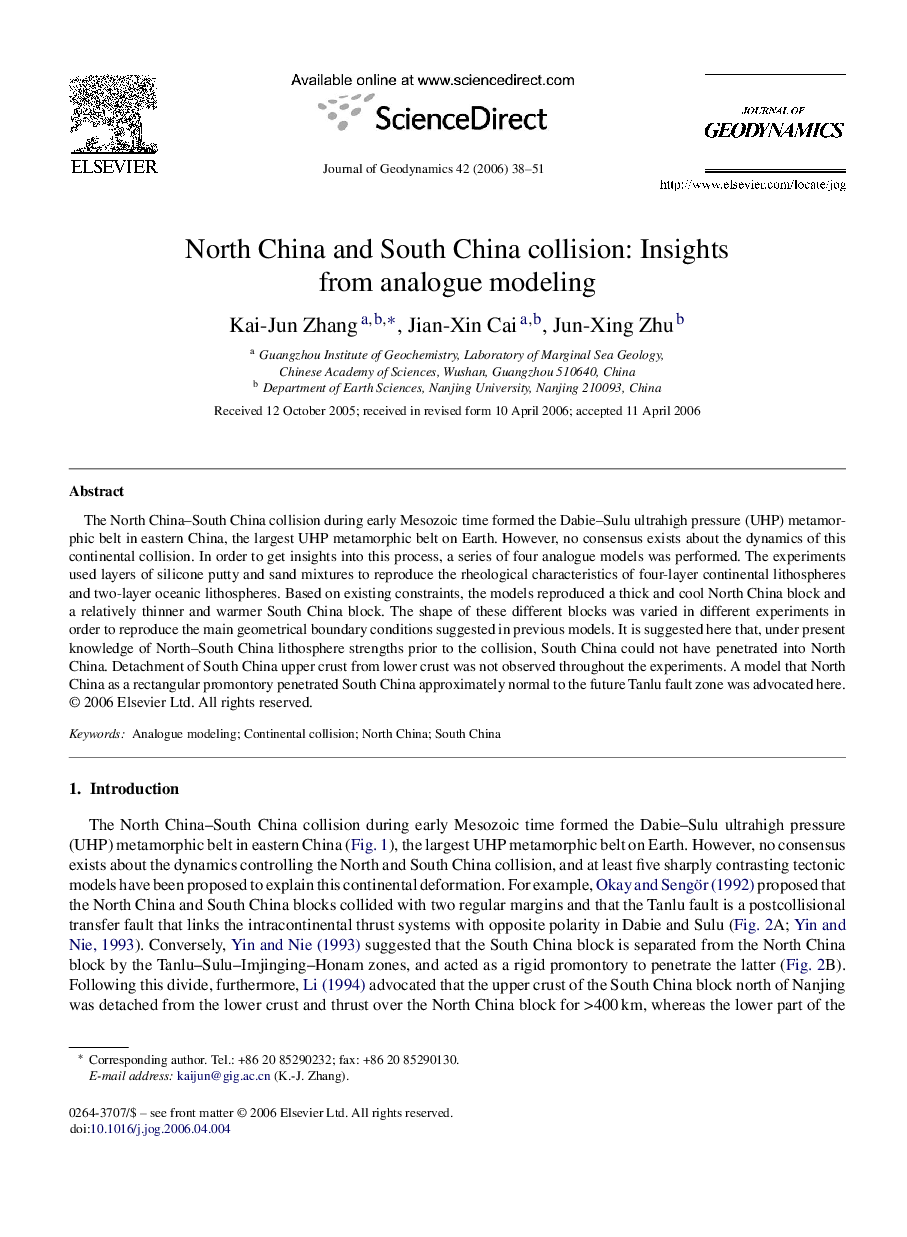| Article ID | Journal | Published Year | Pages | File Type |
|---|---|---|---|---|
| 4688744 | Journal of Geodynamics | 2006 | 14 Pages |
Abstract
The North China-South China collision during early Mesozoic time formed the Dabie-Sulu ultrahigh pressure (UHP) metamorphic belt in eastern China, the largest UHP metamorphic belt on Earth. However, no consensus exists about the dynamics of this continental collision. In order to get insights into this process, a series of four analogue models was performed. The experiments used layers of silicone putty and sand mixtures to reproduce the rheological characteristics of four-layer continental lithospheres and two-layer oceanic lithospheres. Based on existing constraints, the models reproduced a thick and cool North China block and a relatively thinner and warmer South China block. The shape of these different blocks was varied in different experiments in order to reproduce the main geometrical boundary conditions suggested in previous models. It is suggested here that, under present knowledge of North-South China lithosphere strengths prior to the collision, South China could not have penetrated into North China. Detachment of South China upper crust from lower crust was not observed throughout the experiments. A model that North China as a rectangular promontory penetrated South China approximately normal to the future Tanlu fault zone was advocated here.
Related Topics
Physical Sciences and Engineering
Earth and Planetary Sciences
Earth-Surface Processes
Authors
Kai-Jun Zhang, Jian-Xin Cai, Jun-Xing Zhu,
